Today we walked in Thomery, a small town on the Seine not far from here. Last trip we’d been told that there was a beautiful walk in Thomery but we sure didn’t find it and were disappointed in the town. We heard a week ago, though, that Thomery has an interesting history, and that it’s possible to see and walk through that history, so off we went, and this time we were successful. We found a rewarding walk and an unusual bit of history.
The first official mention of Thomery is in some records of 1380. Yes, 1380. The town became famous in the 18th century when the chasselas grape became the favorite table grape of the French court and quickly after that, of all Paris. In the late-1800s, the town shipped 800 tonnes of this grape to Paris.
The visible part of this history is that the grape was grown on stone walls, and most of those walls still exist today. Now, they mark the boundaries of land attached to houses. There were once over 200 kilometers of these walls in Thomery; I suspect most still exist, though few are used to grow grapes anymore.
In its grape-growing heyday, someone determined that the optimal distance between these walls was 9 meters – about 30 feet. So row upon row of stone walls, about 7 – 10 ft tall, were constructed. Here is a Google Earth view of the central part of Thomery – you can see all the walls. This is maybe a quarter of the town, and almost all of it has these walls.
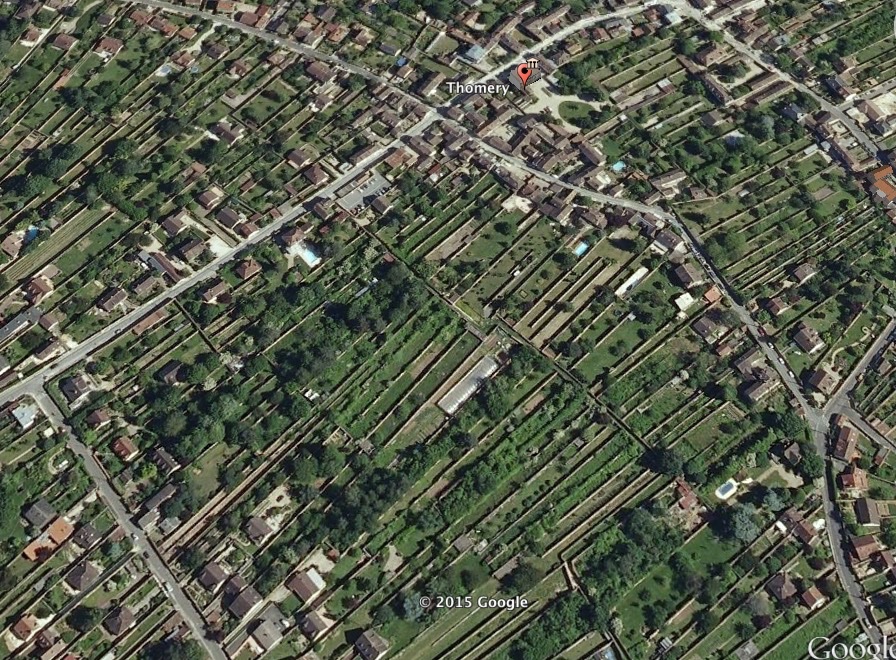
You can also see a diagonal path running through the center section of the walls, from upper-left to lower-right; this is the path we walked. Most of the plots of land are walled along the path, so we were unable to see into most of the yards, but where we could see into a yard we got a good idea of how these walls were used to grow the chasselas grape. Here are some pictures along the path.
Below you see the path itself. The walls on either side border the yards of private houses, whose yards are bordered by those 400 year-old grape walls.
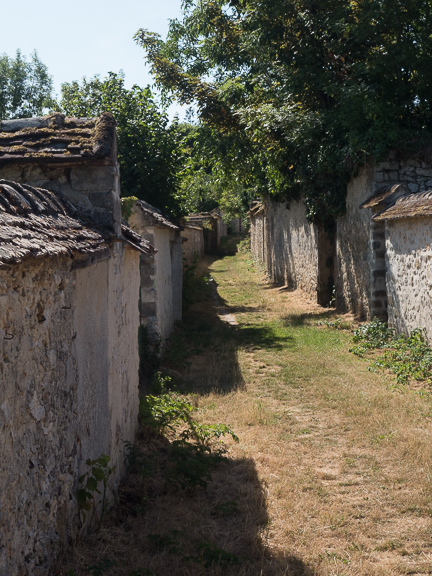
Here you see some walls in their original place. It’s nine meters between the walls, which varied in length; many of them are several hundred meters long.
Some walls do still have grapes growing on them, but they are few in number. The chasselas grape is grown in Switzerland now, and Thomery does grow and sell some, but it’s mostly an artisan industry now.
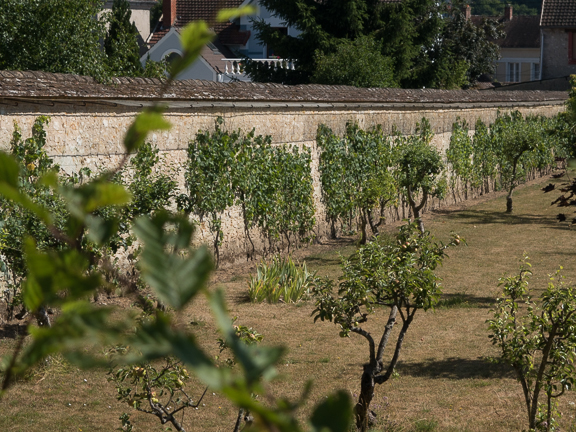
The second part of our walk proceeded along the Seine and ended at the old port of Thomery. Here the grapes (and other fruits from the area) were shipped to Paris by river. They could leave at night and be in Paris for the next day’s markets. The biggest – and heaviest by far – product shipped from here were stone blocks, quarried from nearby and shipped to Paris for its buildings. This area became prosperous and has some beautiful houses on the main streets to and from the port.
The view upriver from the port…
…and down river.
Ah-ha! Another affolante! (For more about affolantes, see Affolantes in Bois-le-Roi)
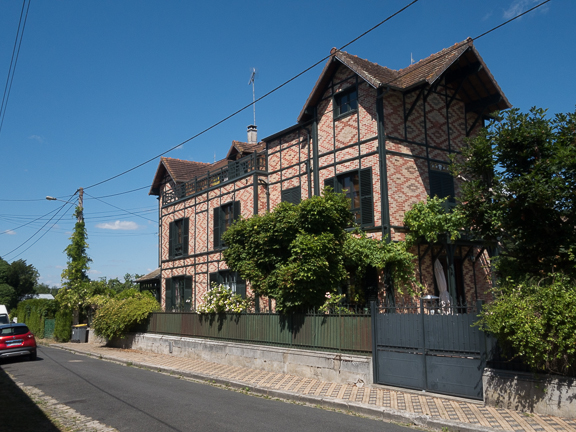
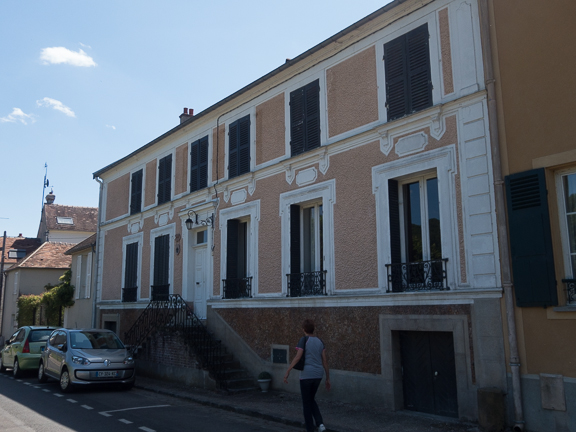
And because someone knew Laurie was missing her Alaska roots, they put a totem pole in the backyard, just for her, I’m sure.
We’ll be back to Thomery, as we think there are more things to see, including some beautiful buildings along the Seine. We’re thankful to Benoit, who told us about the path through the walls, making us go back to Thomery after a first disappointing trip. There are so many places like Thomery, small towns each of which have histories going back centuries. Often, some remnant of that history is still there and can be seen – just takes a bit of perseverence. We persevered with Thomery and were rewarded.

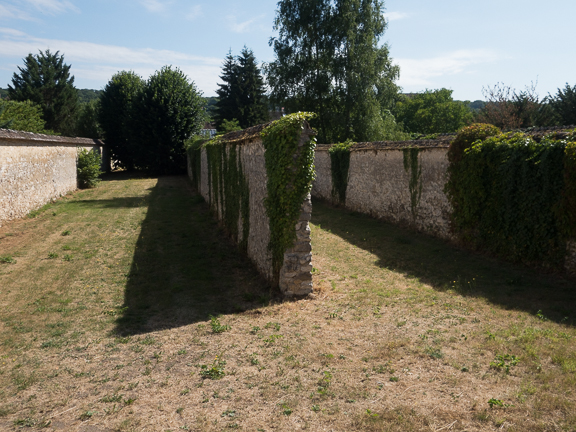
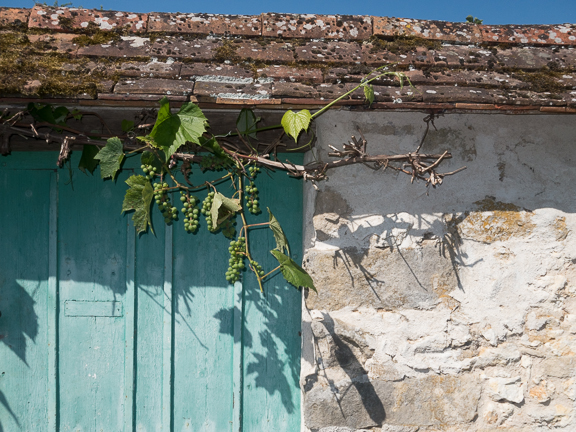
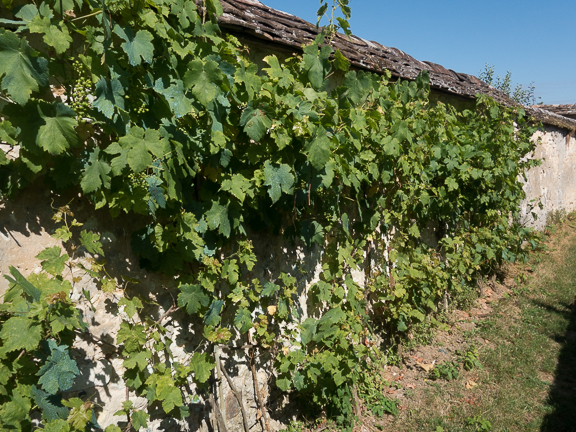

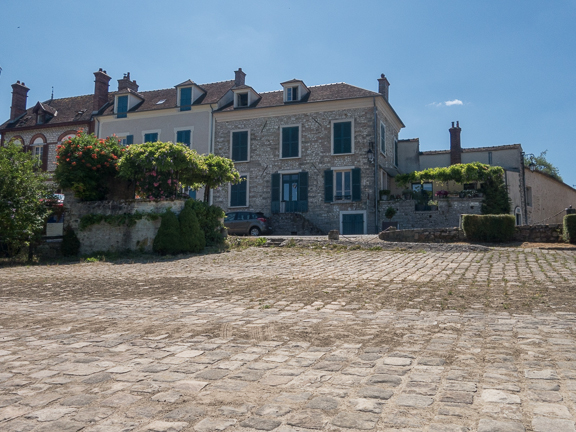
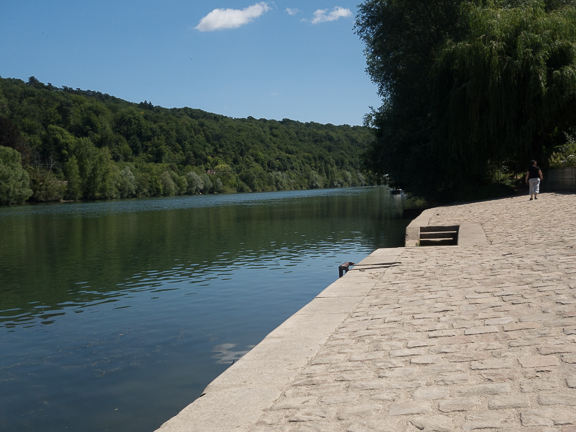
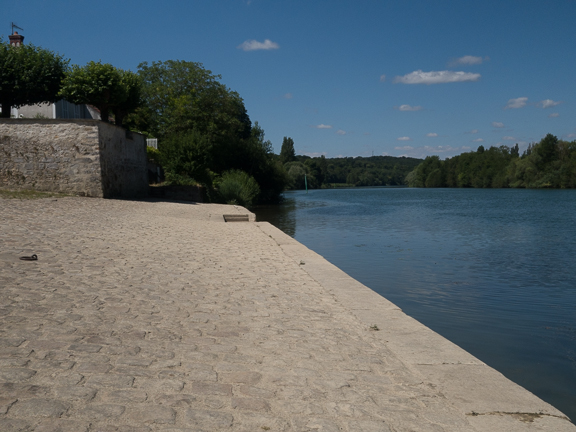
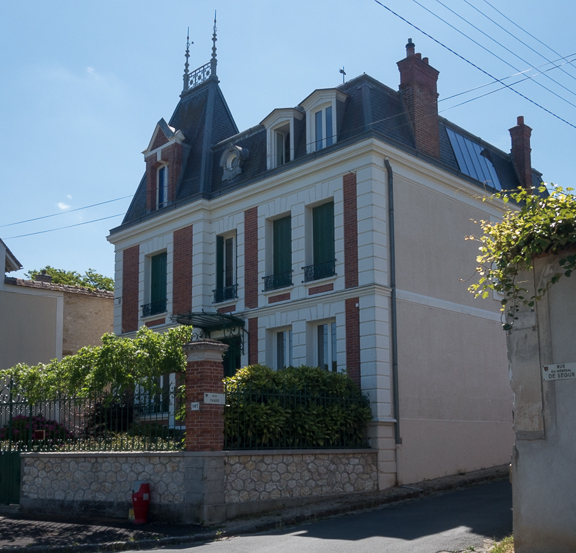
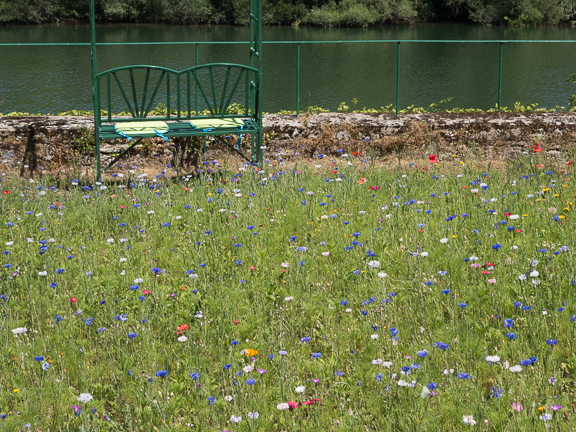

You know more about Thomery than we do! We want a tour…please…
Seeing grapes growing on 400 year old walls is lovely!